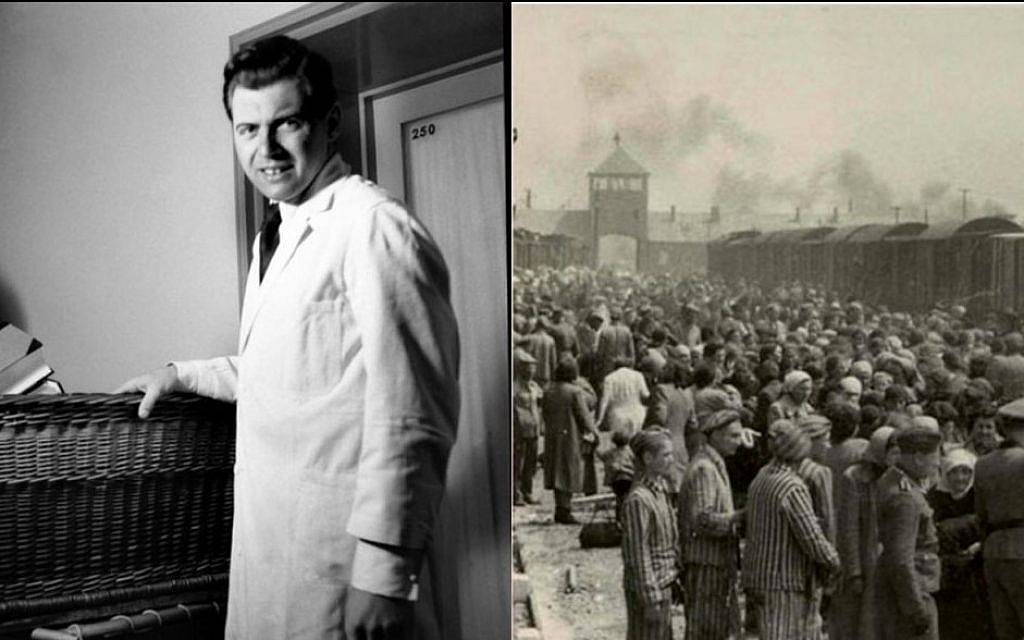In a dusty cupboard at the University of Sao Paulo sits an unassuming skeleton that once belonged to one of the most sinister figures in human history — Dr. Josef Mengele. To the untrained eye, the bones seem ordinary. A healed fracture in the hip points to a past motorbike accident. A small defect in the cheek hints at a severe sinus infection. But this skeleton holds dark secrets, for it once housed the twisted mind of a man responsible for the deaths of hundreds of thousands.
Mengele was born in 1911 to a prosperous family in Bavaria, Germany. By all accounts he enjoyed a comfortable upbringing, showing talent in both academics and sports. Handsome and charismatic, he earned a medical degree and anthropology PhD before joining the Nazi party in 1937. The following year he became a member of the SS, cementing his role as one of Hitler’s most loyal disciples.
When war broke out in 1939, Mengele served valiantly on the front lines, winning medals for bravery. But in 1942 a battle wound ended his combat career. His twisted intellect, however, made him the perfect candidate for a new post at the notorious Auschwitz death camp. There, Mengele became like a kid set loose in a candy store of human suffering.
Given the title of camp physician, one might imagine his job would entail caring for inmates. But the only care Mengele provided was ensuring prisoners swiftly met their end in the gas chamber. During the selection process, where new arrivals were sorted into workers and those sent to their deaths, Mengele consigned a staggering 400,000 souls to be gassed immediately. He undertook this gruesome task with visible glee, earning him the nickname “Angel of Death” among prisoners.
But Mengele had not come to Auschwitz solely to murder. He also saw a chance to advance his research into proving empirically the superiority of the Aryan race. With inmates considered subhuman, nothing prevented using them as human guinea pigs. Mengele converted an existing structure into a macabre personal laboratory.
Ironically, his old mentor, Otmar Freiherr von Verschuer, who’d indoctrinated Mengele in eugenics, secured grant money to fund the gruesome experiments. Like a monstrous Dr. Frankenstein, Mengele scoured each new load of prisoners for interesting genetic aberrations to study. Dwarves, twins, the mentally impaired — anyone with observable anomalies went straight to Mengele’s lab.
But Mengele prized twins above all else. Identical twins especially interested him, as their matching DNA allowed studying whether nature or nurture most influenced development. In the name of this research, Mengele subjected twins to excruciating procedures without anaesthesia, injecting chemicals into their eyes to try turning them blue and deliberately infecting one twin with diseases like gangrene. Then, after the infected twin died, Mengele murdered the other so he could conduct comparative autopsies.
Other experiments were even more chilling. One survivor recalled Mengele sewing two Romani children together in a bid to create conjoined twins. They perished painfully within days. In total, only about 200 of the 1500 twins brought to Mengele’s lab survived. Those not dissected for anatomical research were gassed and cremated.
Outside his lab, Mengele often showed surprising kindness to subjects, bringing them candy and insisting they call him “Uncle.” This veneer masked the fiend within. According to survivor accounts, Mengele once threw a baby off a roof for no reason and murdered 14 children in one night by injecting chloroform into their hearts.
This senseless brutality continued for two nightmarish years. As the Allies closed in, Mengele fled Auschwitz in January 1945, destroying records of his work. Temporarily captured by American forces, a clerical error allowed Mengele to go free. He spent four years in hiding before escaping to Argentina via the infamous “ratlines” used by fleeing Nazis.
In Buenos Aires, Mengele lived openly, even using his real name on citizenship paperwork. Feeling safe from prosecution, he periodically returned to Europe to visit family and friends. But famous Nazi hunter Simon Wiesenthal finally picked up Mengele’s trail after he divorced his first wife Irene. The resulting paper trail proved the “Angel of Death” had cheated the hangman’s noose.
Realizing Mengele was still alive, German authorities issued a warrant for his arrest in 1959. But when police raided his Argentine apartment, the bird had already flown. Fear of exposure from providing illegal abortions had driven Mengele into hiding in Paraguay under the laughably transparent alias “José Mengele.”
There Mossad and Wiesenthal relentlessly pursued Mengele for years. The constant stress frayed his nerves. His health and finances suffered. At one point he nearly died from a giant ball of ingested beard hair forming in his intestines. Despite the torment his pursuers inflicted, Mengele never expressed remorse for his horrendous war crimes.
After relocating to Brazil, the aging Mengele suffered a stroke while swimming in 1979 and drowned. He was buried in Sao Paulo under a false name, allowing rumours to persist that he was still alive. Exhuming the grave in 1985 and matching dental records finally verified Mengele’s death. But to prevent creating a Nazi shrine, authorities guarded his bones closely for decades. Only in 2023 did the University of Sao Paulo finally acquire them for medical instruction.
Unlike some infamous killers, nothing about Mengele’s friendly exterior ever hinted at the evil within. He committed profoundly disturbing atrocities without hesitation…yet always had a smile for his victims. Despite evading justice, his final years were spent in poverty and failing health, haunted by the spectre of his past.
While Mengele’s bones now teach students, the lessons they impart go far beyond anatomy. They serve as a disturbing reminder that true evil rarely advertises itself. As long as hatred continues festering unchecked in even a minority of human hearts, the potential for new monsters like Josef Mengele persists. His bones should prick the conscience of every student forced to confront that grinning skull in the cupboard. Perhaps the horror of what one man wrought might prevent history repeating. Perhaps not. But the effort must be made, lest the souls of Auschwitz cry out forever in unavenged agony.


